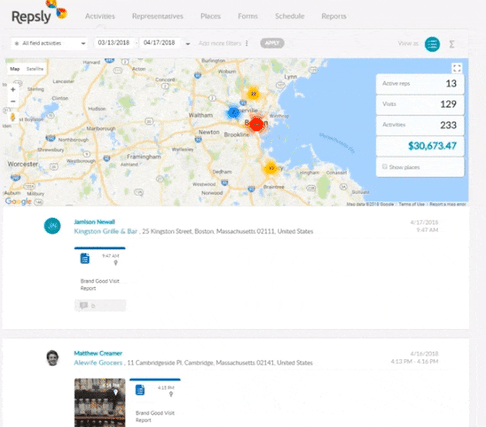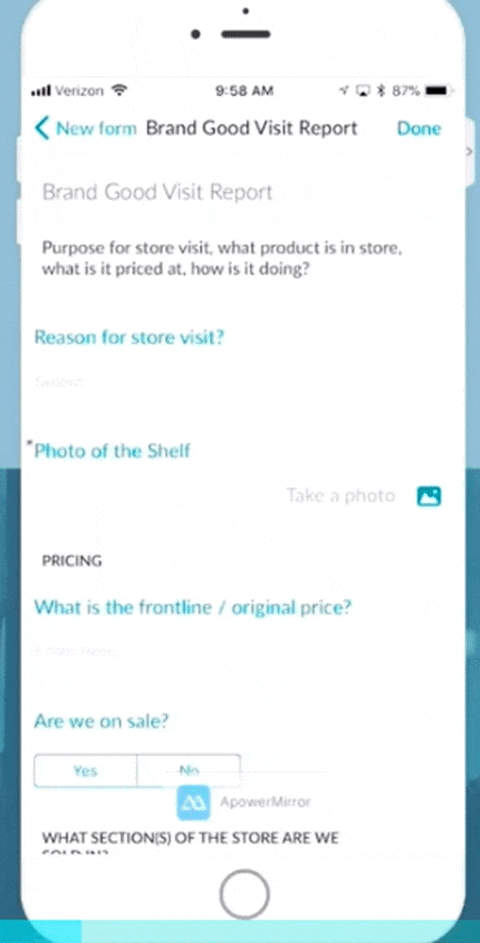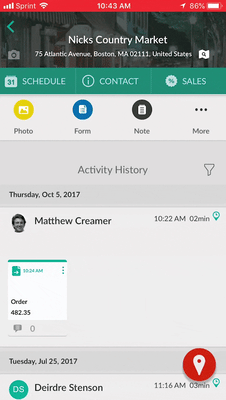If you want your brand to succeed in stores, you need a great retail marketing strategy. Retail marketing is the process of bringing a product directly to customers in a retail store. There are many factors that go into a successful retail marketing strategy, and finding one that works for your unique brand can help you perform significantly better in stores.
Creating your “retail marketing mix” can be frustrating, but using data can make finding the right strategy for your brand a lot easier. First, let’s look closer at the main qualities of retail marketing.
The Retail Marketing Mix
Retail marketing is commonly broken down into four principles, or four “P’s,” that are essential to success. Apply each of these principles to your own retail marketing strategy to boost sales and take your brand to the next level.
Product
This principle is the basis for your marketing strategy. First, you need to develop and perfect your product. Afterwards, you’ll need to work out some more details, such as how many different offerings or variations your brand will have, or what your packaging will be like. Last, you need to classify the type of product, as this could affect the types of retailers you target. There are two main classifications:
- Hard goods: Durable goods that are intended to serve a purpose for a prolonged period of time, like appliances, sporting equipment or electronics.
- Soft Goods: Less durable products that are not intended to last a long time, such as clothing, cosmetics, food products, or household items.
Price
Consider variables such as cost of sales, overhead costs, competitors’ pricing, and market conditions when determining a price for your product. Your price should be high enough to cover all of these costs, while also being competitive and realistic for the value your product provides.
Place
Where will customers have the opportunity to buy your product? Place is a vital part of retail marketing because it’s how you target the right types of customers and retail accounts. Will you put your brand in small, independently owned stores or in major retailers? Once you’re in the store, where will your product be located? In an aisle with similar products, or out front in highly traversed areas? Making the right decisions about location is crucial to your brand’s visibility.
Promotion
Promotion speaks to how you reach customers and spread interest about your brand. It’s how you advertise, market, and promote your product while targeting these efforts to your customers. Stand out from the competition with a clever and unique promotional strategy -- The key is finding a strategy that generates excitement about your brand.
It’s necessary to have a plan for each of these principles, so that they work hand in hand to truly give your brand the best “mix” of strategies. Executing the four principles of retail marketing is no easy task, but can be made easier by using data effectively.
Next, we’ll talk about three types of data that make a world of difference in the effectiveness of your retail marketing, and how each one can benefit your brand.
Activities Data
No matter how ingenious your retail mix is, it can’t reach its full potential if your team isn’t executing it efficiently. The four P’s are a lot to keep track of across all of your retail locations, so it’s essential that you have an organized system for keeping everything streamlined and operating at full capacity.
Let’s say that you are sending reps out to many different retail locations to do an in-store product demo. There’s a lot of data and moving parts to keep track of here, such as:
-
Which rep is responsible for which retailer
-
How much product volume they’ll be giving away
-
How long each rep will be staying for
-
How many events each rep will do in a day
Classifying these components as “activities data” helps you manage all of this information, and using it the right way can be the difference in how well your team can actually carry out your plan.
Use an Activities Feed like this one to see and manage the work your reps are doing at the stores they visit.

As you can see, activities data allows your entire team to be in constant communication about what’s happening out in the field, and allows managers to oversee the work of every one of their reps, without even leaving the office.
This increased level of communication and collaboration will do wonders for your retail marketing mix. Creating a great strategy is a start, but using activities data will help your team to actually implement it.
Observed Data
Let’s say that you and your team have created a brilliant retail marketing strategy. You’ve covered the four P’s and managed to get your product facings in several retailers, but how do you ensure that your strategy is being carried out the right way when you’re not there?
Observed data is the data that your reps collect while making their visits, and the details they see regarding your product in stores. These details include things such as your brand’s locations in store, what promotions or sales are currently being run, or the state of your brand’s point of purchase displays.
Collecting and communicating observed data is the key to truly seeing into the store firsthand, and understanding the many different factors that go into executing at retail.
Let’s look at an example of how observed data can help you ace your retail marketing mix, in particular the “place” and “promotion” aspects. Suppose that your team has created a great point of purchase display that is eye-catching, educational, and displays your product well. You want to ensure that this display is located where it will see the most traffic, or at the very least is located near complimentary products.
The use of customized mobile forms can make collecting this data and reporting it back to the office easier than ever. You can design your form to ask questions such as where in the store your displays are located, or what competitors are located nearby. You can even include a photo of the store to get a clearer idea of how your product looks at each retail account. All of these observations are synced in real time, making it easy for your team to address any problems or gauge performance while your reps are still on site.

By using this to your advantage, you can get better data from your retail locations, and understand how the retail marketing strategies that your team has developed actually play out in the store.
Sales Data
Observed data is great for tracking qualitative information about your marketing strategies’ performances, but what if you want some hard numbers to back it up?
Sales data shows the performance of your brand numerically, and allows you to quantitatively compare performance of your brand across different locations, promotions, or markets. It’s data directly from the store that shows exactly how much of your brand is getting sold, and as a result how much revenue you’re turning.
How can this help you to develop the best retail marketing mix? Having hard numbers to confirm or contradict your qualitative observed data gives you a much clearer picture of what works and what doesn’t.
For example, imagine that your rep sees steady sales at a local retailer, coupled with a few “high sales” weeks following a promotional demo or event at that location. This data is valuable for a few reasons.
- Your team can now say with confidence and backing numbers that your promotion strategies are very effective.
- You can compare the spike in sales of that particular promotion to the numbers for other promotions. Having this data will give you a world-class level of insight regarding your retail marketing strategies, and allow you to dedicate the most time and resources to those strategies that have demonstrated the most success.
- You can use these insights to have data-driven conversations with the store manager about the value in your brand’s promotions or events. You can then use the numbers as leverage to ask for additional displays, or more time to be in store promoting your product.

Using All Three Types of Data
While activities data, observed data, and sales data can each improve the execution and quality of your retail marketing strategies individually, using them altogether will make the biggest difference.
Use activities data to oversee and manage the first stages of your retail mix. See and organize all of the data from your reps’ visits, events, and promotions in order to be more efficient with your operations.
Use observed data to see firsthand into your retail accounts and qualitatively gauge your strategies’ performance at each location. Mobile forms will help your reps to record the best data and insights as to how your retail accounts are executing your plan.
Last, use sales data to quantify your activities and observed data. Back up the qualitative observed data with hard numbers to compare performance between retailers, locations, promotions, or even reps. Use these numbers to have data-driven conversations both within your team and with your partners.
Activities data, observed data, and sales data can all work hand in hand to help you ace your retail marketing. If you’d like to learn more about how this data can benefit your unique brand, contact one of our Repsly specialists!





.png?width=480&height=252&name=PRESS%20RELEASE-2%20(4).png)

